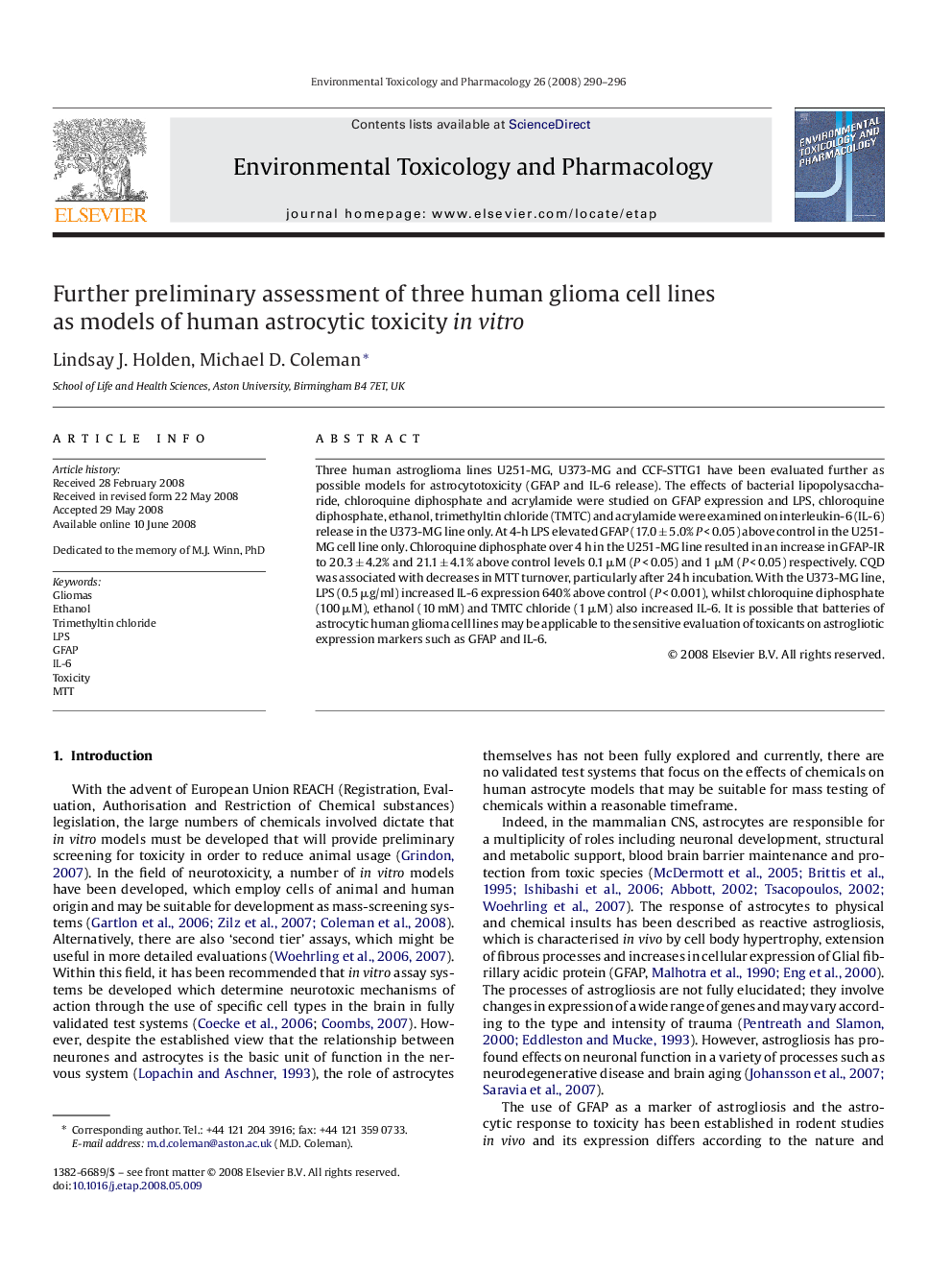| Article ID | Journal | Published Year | Pages | File Type |
|---|---|---|---|---|
| 2584320 | Environmental Toxicology and Pharmacology | 2008 | 7 Pages |
Three human astroglioma lines U251-MG, U373-MG and CCF-STTG1 have been evaluated further as possible models for astrocytotoxicity (GFAP and IL-6 release). The effects of bacterial lipopolysaccharide, chloroquine diphosphate and acrylamide were studied on GFAP expression and LPS, chloroquine diphosphate, ethanol, trimethyltin chloride (TMTC) and acrylamide were examined on interleukin-6 (IL-6) release in the U373-MG line only. At 4-h LPS elevated GFAP (17.0 ± 5.0% P < 0.05) above control in the U251-MG cell line only. Chloroquine diphosphate over 4 h in the U251-MG line resulted in an increase in GFAP-IR to 20.3 ± 4.2% and 21.1 ± 4.1% above control levels 0.1 μM (P < 0.05) and 1 μM (P < 0.05) respectively. CQD was associated with decreases in MTT turnover, particularly after 24 h incubation. With the U373-MG line, LPS (0.5 μg/ml) increased IL-6 expression 640% above control (P < 0.001), whilst chloroquine diphosphate (100 μM), ethanol (10 mM) and TMTC chloride (1 μM) also increased IL-6. It is possible that batteries of astrocytic human glioma cell lines may be applicable to the sensitive evaluation of toxicants on astrogliotic expression markers such as GFAP and IL-6.
